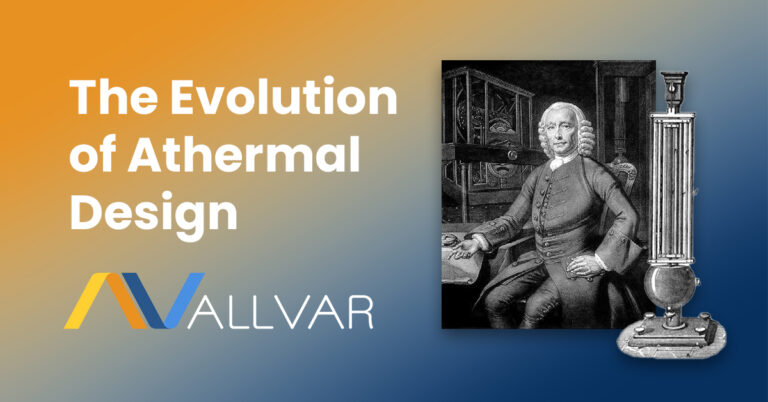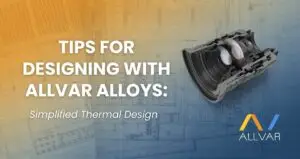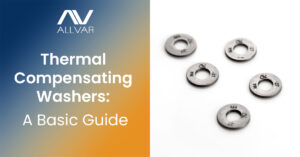Athermal design plays a pivotal role in achieving thermal stability. This thermal stability is often required for performance in optics and precision systems. Did you know that key technology in athermal design traces back to the pre-industrial era? The design of a remarkable 18th-century clock continues to influence precision systems.
The Gridiron Pendulum: A Breakthrough in Athermal Design
Around 1726, self-taught clockmaker John Harrison aimed to create a more precise clock. Harrison noted that over time, his pendulum clock’s precision would drift. A pendulum clock’s swinging weight oscillates back and forth at a constant frequency. This frequency is determine by the pendulum’s length. As the clock’s temperature shifted, the pendulum’s length grew and shrank. This affected its frequency and precision. To tackle this pendulum conundrum, he delved into the realm of material science.
John studied the thermal expansion of different clock-making materials. He measured the material’s relative changes in length at various temperatures. These measurements were early records of different material’s coefficient of thermal expansion (CTE). Harrison chose two materials whose CTE would cancel each other out. He mitigated the thermal expansion of each material by placing them in opposition. This thermal compensation technique kept the pendulum at a near constant length. Harrison’s new athermalization technique allowed him to make a precision longcase clock which kept time within one second in a month, much better than other clocks of the time. This invention, known as the gridiron pendulum, paved the way for athermal design.
The Gridiron Pendulum Design
The schematic of the gridiron pendulum shows the design’s simple thermal compensation technique. The yellow rods represent brass, a higher CTE (coefficient of thermal expansion) material. These brass rods compensate the lower CTE material, iron, depicted in blue. This compensation ensures a constant pendulum length at different temperatures. Figure A illustrates the general external appearance of the pendulum. B presents the schematic at ambient temperature. C depicts the schematic at an elevated temperature. The length of the pendulum remains constant regardless of its environment’s thermal changes.
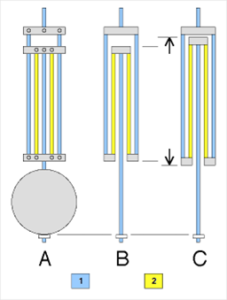
Applying Athermalization Principles in Precision Systems and Optics
Today, designers incorporate John Harrison’s athermal techniques in precision systems and optics designs. There are many names used for the gridiron pendulum’s switchback design. These include tube-in-tube, barrel-in-barrel, switchback system, top-hat, or bimetallic housing. The switchback design more or less offers a way for two positives to create a negative. In a pre-negative CTE world, this was a standard athermalization method. Unfortunately, this switchback design increases part count, size, and manufacturing complexity. It is still a very popular passive athermalization technique.
Another passive athermalization technique involves index matching. An optic can be passively athermalized by selecting the glass and housing materials. This technique matches the lenses index of refraction (dn/dT) and CTE of the lenses and housing. A potential drawback is that the indexed match lenses can constrain the design space. The lens matching for athermalization often comes with tradeoffs. This can impacts the system’s size, cost, weight, or performance. Outside of these methods, designers turn to active mechanisms for athermalization.
Benefits of ALLVAR Alloys in Athermal Design
Innovation never stops, and athermal design is no exception. Enter ALLVAR alloys, the game-changer in athermal design. These advanced alloys open up new frontiers of possibility. Designers can choose the thermal expansion that works best for their design. This can be a specific positive, negative, or even zero CTE values. Negative CTE materials create athermal structures in series with positive CTE materials. This technique is beneficial for metering structures and struts for telescopes.
Athermal refractive optics are also improved by ALLVAR Alloys. The next generation of athermal optics use ALLVAR alloy spacers and lens barrels. Designers use spacers that match the thermal defocus of their system. This compensation technique, as shown on the right, offers a simple solution. Negative CTE materials enable reduced SWAP-C (Size, Weight, Power, and Cost) designs. Furthermore, this can reduce the system’s lens count.
Please see our Introductory Guide to Tailored Thermal Expansion to learn more.
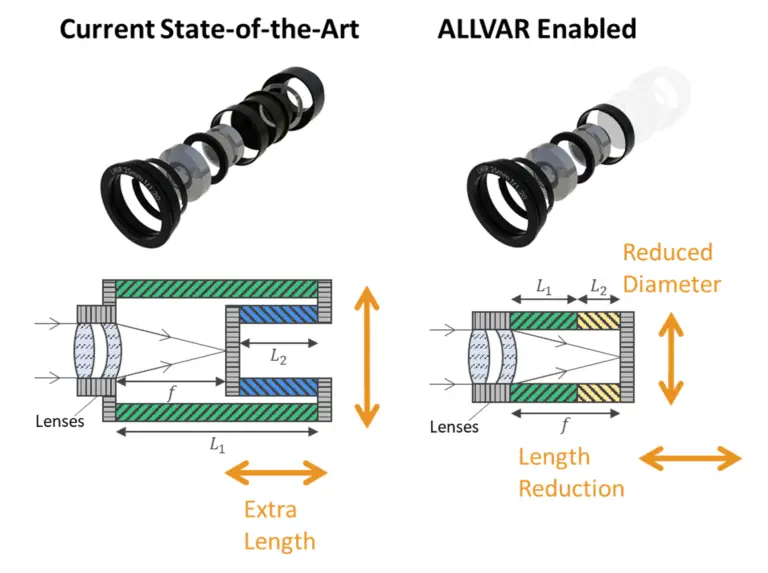
The Future of Athermal Design: Embrace the Possibilities
We have not yet reached the full potential of athermal design. John Harrison’s 18th century innovation set the stage for today’s athermalization techniques. ALLVAR alloys empower designers to push the limits of new athermal designs. We want to help innovators use material science to shape athermal systems. Like John Harrison did in 1726. As we embrace the possibilities of athermal design, temperature stability knows no bounds.
Don’t forget to follow ALLVAR on our LinkedIn page and check out our YouTube page,. Subscribe to our newsletter at the bottom of the page to stay up to date with our latest news and events! We welcome any questions you may have about ALLVAR Alloys. Use the contact button in orange below to get in touch.

